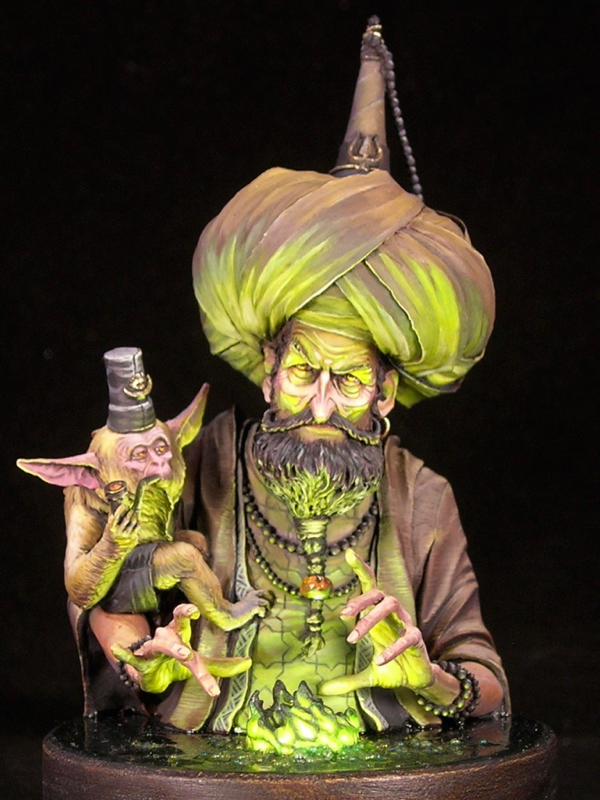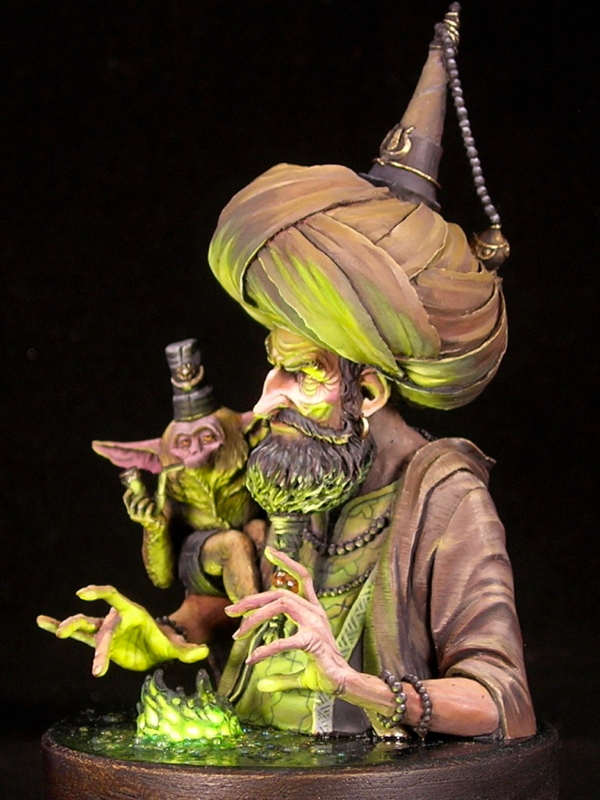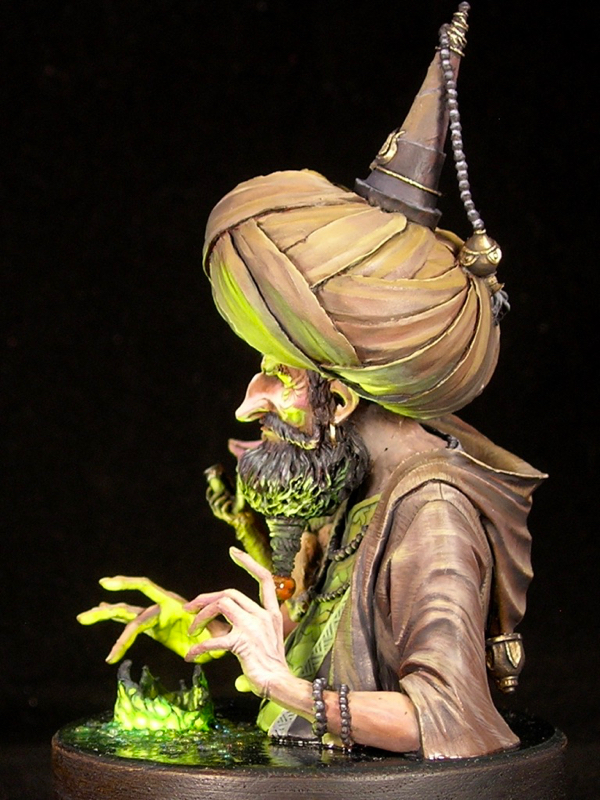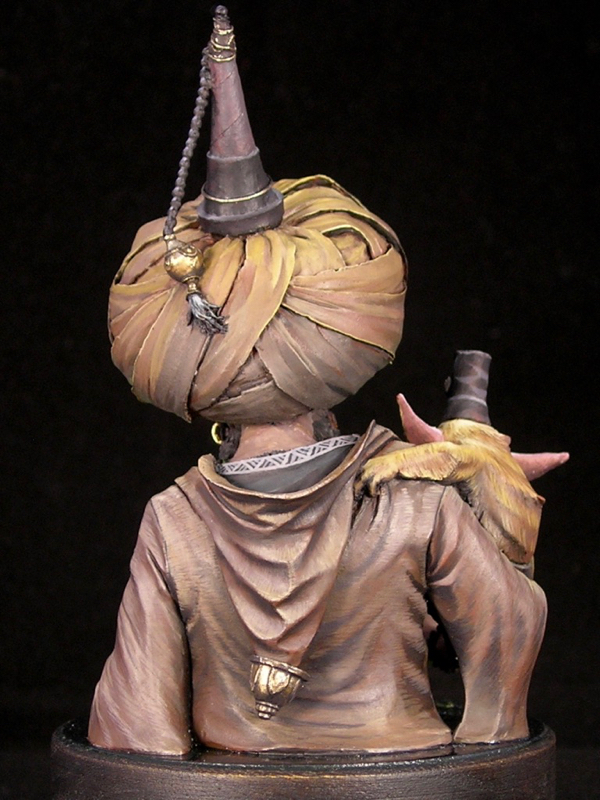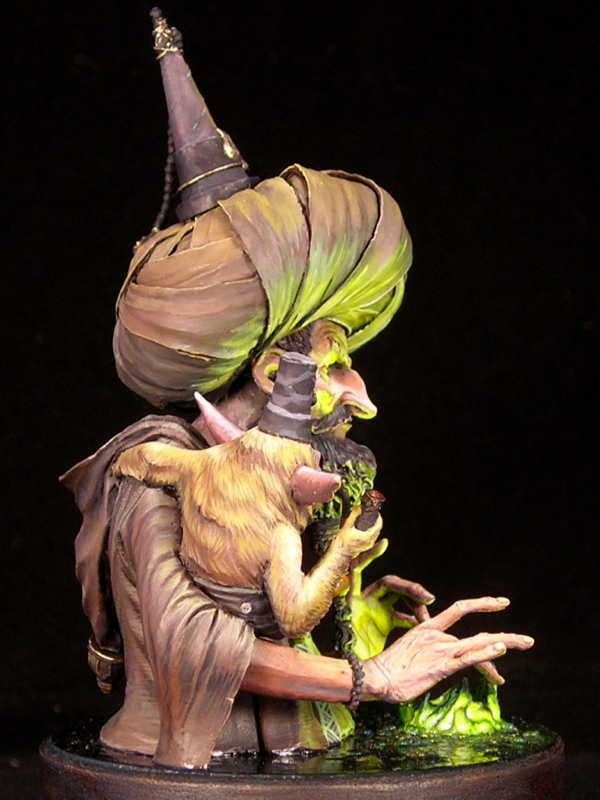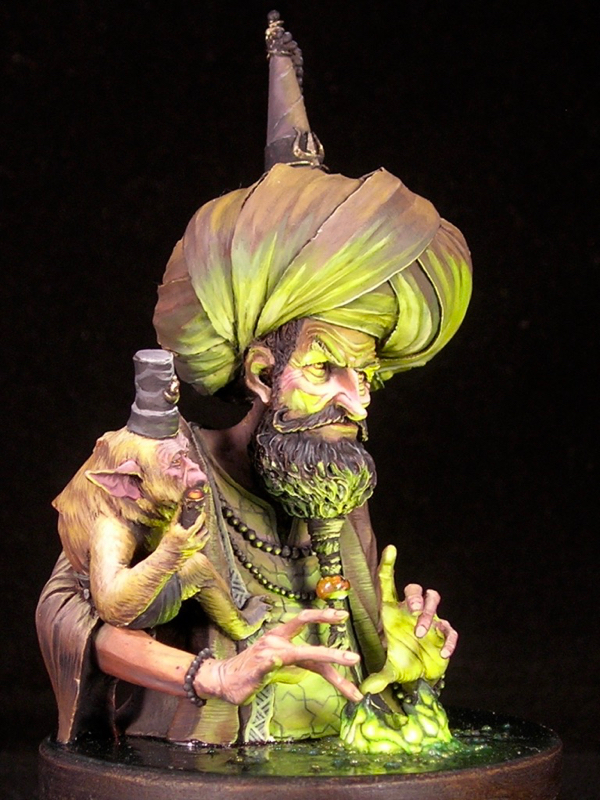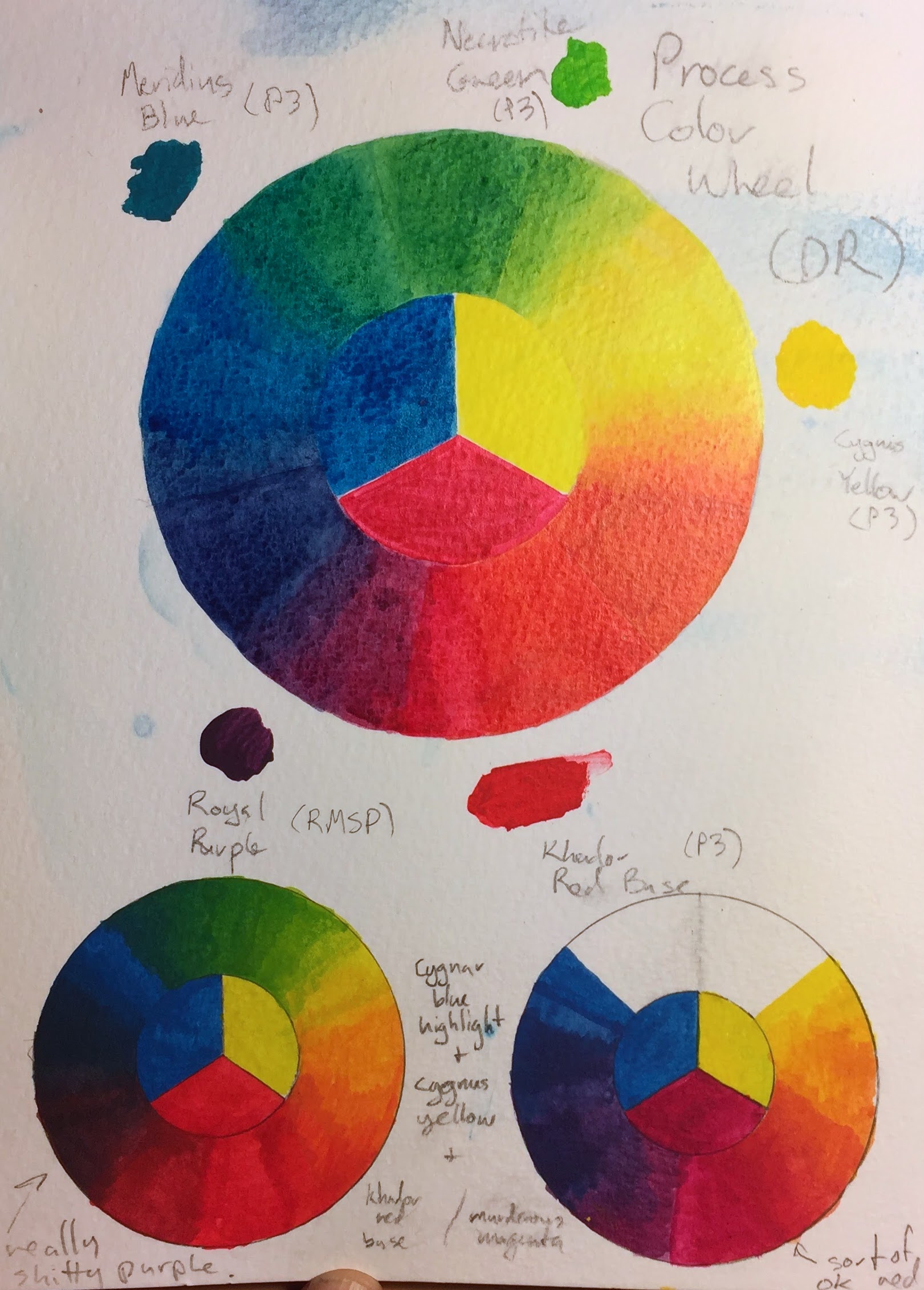The sculpt is “The Wizard of Agni,” by Ben Komets Miniatures (sculpted by Lucas Pina Penichet), but I call my version The Alchemist. This was one of those figures that I fell in love with the second I saw it, and immediately knew how I wanted to paint it. The figure practically screams for OSL, and with the magical, alchemical vibe he gives off, using a magical flame color just seemed natural.
When OSL is one of the main light sources, you can get very different results depending on whether the light is a natural light source (like fire, which gives off all colors of light) or a colored artificial light source, and if it’s colored, whether it’s a primary or secondary color. Using a light source of a secondary color, like the green fire I used for The Alchemist, lends itself to simple color schemes with a very limited color palette. This is because when green (or another secondary color) mixes with other colors, you will either end up with something quite similar to the original color, or a desaturated, muddy color.
For The Alchemist, I decided to pair a strong saturated yellow-green with mostly desaturated colors, generally reddish and purplish browns in order to play with complementary colors. I also made very limited use of a saturated orange in just a few places: the eyes of the monkey and alchemist, the monkey’s pipe, and the bead in the alchemist’s beard.
With a very large scale figure like a bust, you have the opportunity to add far more detail than you can in 25 or 30mm scale. So I think it’s important to play with textures and freehands to take advantage of that opportunity. I generally like to do some of each. I had a lot of fun with the textures, especially the monkey fur and wrinkled hands. The monkey fur was very simple to do, just lots of little lines, but came out extremely well. The sculpt even has a tiny bit of fur sculpted in some places, to suggest the direction. I found the appearance was better if I painted the fur to be a bit matted, rather than smooth.
For the freehands, I went with muslim geometric patterns, which I very much like and have used before. Not only do they go well with the Turkish vibe of the sculpt, they also fit the subject matter: alchemy and chemistry have a long history in the muslim world, and even the world alchemy derives from the Arabic al-kīmiyā’ (الكيمياء). The pattern on the alchemist’s shirt was a bit of a pain to get right, since the lines need to be very precise due to all the regularity. I started with a square grid, then added the triangles, and had to do a number of minor adjustments to fix imperfections. On the other hand, the border on the vest was simple and easy. Both were painted before adding the beard and arms to allow easy access for all that precision work.
I entered “The Alchemist” into the painting competition at Kublacon, and was lucky enough to take best of show amidst some of the stiffest competition I’ve seen there. If you would care to voice your own opinion, he’s up on Putty & Paint and CoolMiniOrNot, or leave a note in the comments!
